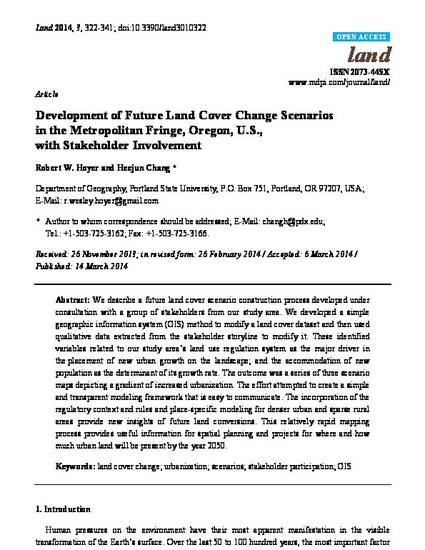
- Urbanization -- Oregon,
- Land use -- Oregon,
- Cities and towns -- Growth,
- Land cover -- Oregon
We describe a future land cover scenario construction process developed under consultation with a group of stakeholders from our study area. We developed a simple geographic information system (GIS) method to modify a land cover dataset and then used qualitative data extracted from the stakeholder storyline to modify it. These identified variables related to our study area’s land use regulation system as the major driver in the placement of new urban growth on the landscape; and the accommodation of new population as the determinant of its growth rate. The outcome was a series of three scenario maps depicting a gradient of increased urbanization. The effort attempted to create a simple and transparent modeling framework that is easy to communicate. The incorporation of the regulatory context and rules and place-specific modeling for denser urban and sparse rural areas provide new insights of future land conversions. This relatively rapid mapping process provides useful information for spatial planning and projects for where and how much urban land will be present by the year 2050

This is the publisher's final PDF. Originally published in Land and can be found online at: http://dx.doi.org/10.3390/land3010322